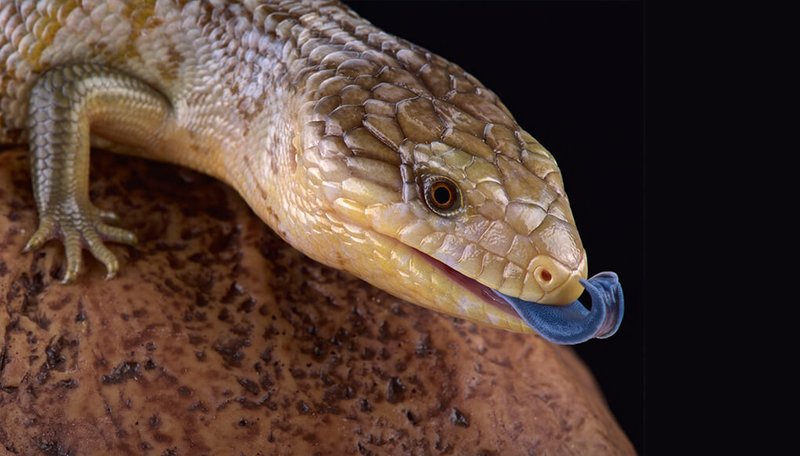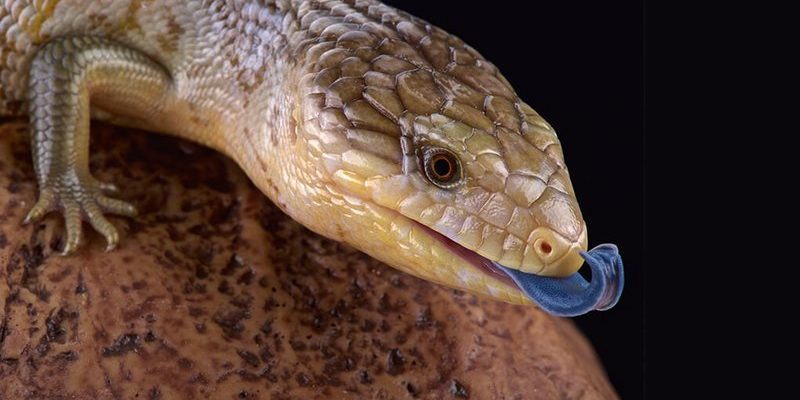
Picture this: you’re at a friend’s house and they have a blue-tongue skink lounging in its tank. You lean in to get a closer look, and bam—out comes that striking blue tongue! It’s like a splash of color on a canvas. But what’s the story behind that tongue? And what about their care, habits, and behavior? Understanding these creatures can enrich your appreciation and maybe even inspire you to invite one into your life. So, grab a cup of coffee, and let’s unravel the truth about blue-tongue skinks.
Myth 1: Blue-Tongue Skinks Are Poisonous
One of the biggest myths about blue-tongue skinks is that they’re poisonous. You might have heard someone say, “Oh, be careful! Those lizards can bite and are venomous!” Honestly, that’s just not true. Blue-tongue skinks are completely non-venomous. When they feel threatened, instead of biting, their first line of defense is to stick out that vibrant blue tongue. This display is intended to scare away predators, making them think, “Whoa, that lizard looks dangerous!” It’s more of a bluff than anything else.
Here’s the thing—while they may seem intimidating with that colorful tongue, blue-tongue skinks are actually pretty docile. They’re not aggressive and rarely bite unless they feel cornered. So if you’re considering one as a pet, you can relax knowing it’s not going to cause you any harm. Just approach them calmly and handle them gently.
Myth 2: Blue-Tongue Skinks Require Complicated Care
Many people believe that keeping a blue-tongue skink is a daunting task. You might have heard rumors about elaborate setups or special diets. But here’s a comforting fact: they’re relatively easy to care for. Sure, you want to provide a suitable environment, but it doesn’t have to be overly complicated.
You’ll need a tank that’s at least 40 gallons, with a secure lid to prevent escapees. Keep the temperature between 75°F and 90°F, with a basking spot reaching around 100°F. Use a mix of substrate like coconut husk and reptile carpet for easy cleaning. Add some hiding spots and branches so your skink feels safe and secure.
When it comes to feeding, blue-tongue skinks have a simple diet. They thrive on a mix of:
- Vegetables
- Fruits
- Insects
- Protein sources, like cooked chicken or dog food
This variety keeps their meals interesting and ensures they get the right nutrients.
Myth 3: All Blue-Tongue Skinks Are the Same
You might be surprised to learn that blue-tongue skinks aren’t just one type. In fact, there are several species! The most common ones kept as pets are the Eastern blue-tongue skink, Indonesian blue-tongue skink, and the Northern blue-tongue skink. Each species has its own unique traits, and while they all share that eye-catching blue tongue, their sizes and colors can vary.
For example, Eastern blue-tongue skinks tend to have more vivid patterns and are usually the largest, growing up to 24 inches! On the other hand, Indonesian blue-tongue skinks are generally smaller and feature more muted colors. So, if you’re looking to adopt one, take some time to learn about each species to see which might be the best fit for you.
Myth 4: Blue-Tongue Skinks Are High-Maintenance Pets
If you’re considering a blue-tongue skink, you might be wondering if they’ll demand tons of your time. The truth? They’re rather low-maintenance, especially compared to other pets like dogs or cats. These skinks don’t require constant interaction or socialization, making them perfect for people with busy lifestyles.
Of course, you should spend time with them to build trust, but they won’t need daily walks or frequent grooming. Regular feeding, tank cleaning, and occasional handling are all you really need to keep your skink happy. Remember to observe their behavior—if they’re hiding all the time, they might need more confidence-building time outside their tank.
Myth 5: Blue-Tongue Skinks Are Only for Reptile Experts
You might think that only experienced reptile enthusiasts can handle blue-tongue skinks. But here’s the reality: they’re great pets for beginners too! With some basic knowledge about their care requirements, any first-time reptile owner can become a proud skink parent.
Start by doing your research. There are plenty of resources available—books, websites, and even local reptile communities. And don’t hesitate to ask questions. Many experienced skink owners are happy to share their wisdom. When you’re ready, find a reputable breeder or pet store so you can get the best possible start with your new pet.
Blue-tongue skinks are fascinating creatures that deserve recognition for their unique characteristics and easy-going personalities. By dispelling these common myths, we can see them for what they truly are: lovable, low-maintenance pets. With the right care and environment, these skinks can thrive and bring joy to their owners. Whether you’re considering adding one to your family or simply want to appreciate them from afar, understanding the facts about blue-tongue skinks makes all the difference. So, the next time you see one, you’ll know just how special they are!

